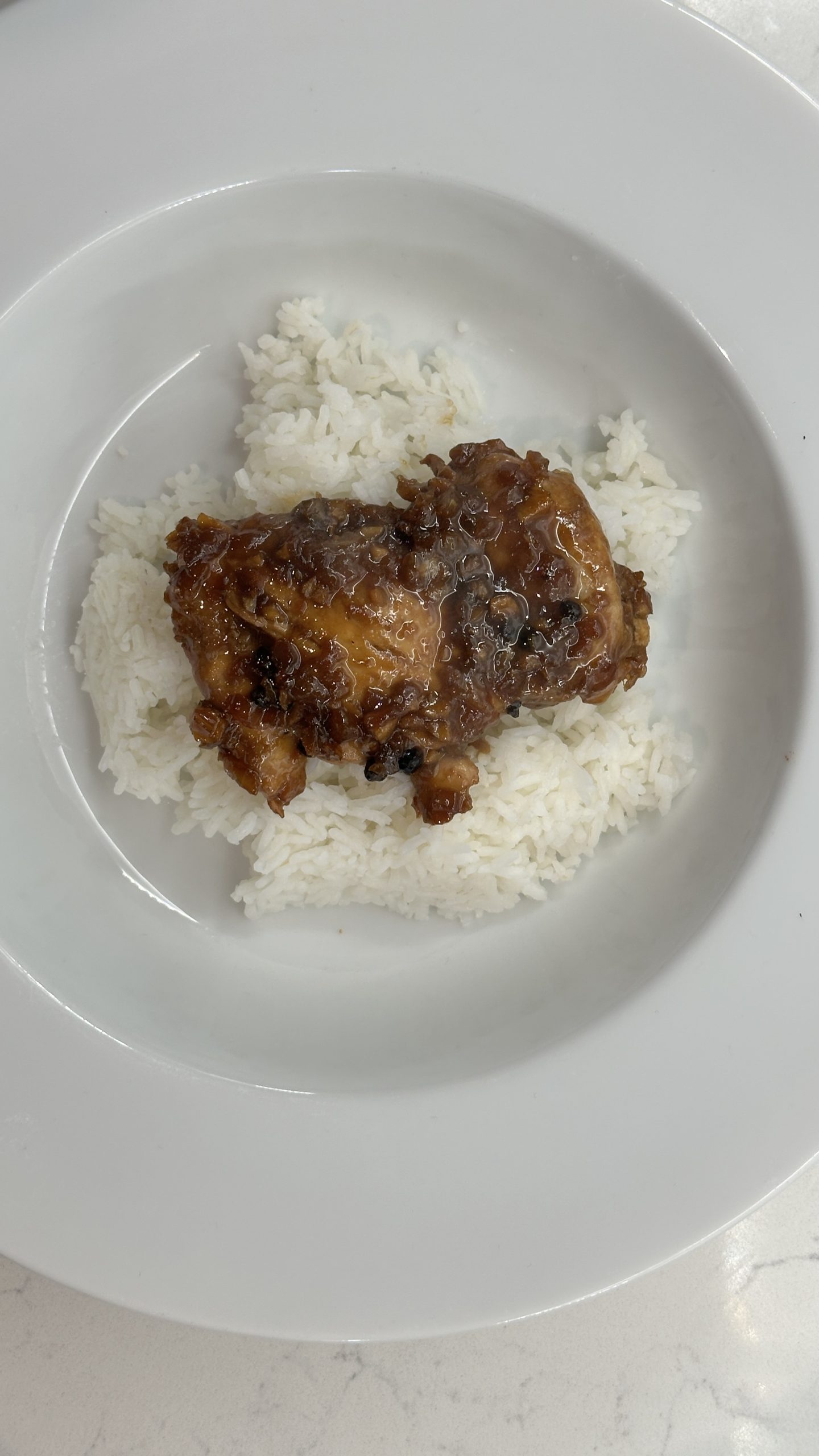
Worldwide Food Tour – Philippines
If there’s one dish that embodies the heart and soul of Filipino cuisine, it’s Chicken Adobo. This iconic dish is a perfect balance of salty, tangy, garlicky, and slightly sweet flavors, slow-braised to perfection in soy sauce, vinegar, garlic, bay leaves, and black peppercorns.
Adobo is not just food—it’s a cultural symbol. Every Filipino household has their own version, passed down through generations, making it one of the most beloved and widely eaten dishes in the Philippines. Whether served in a humble home kitchen or at a fiesta, Chicken Adobo is comforting, flavorful, and deeply tied to Filipino identity.
The History: Pre-Colonial Roots and Spanish Influence
The word “adobo” comes from the Spanish verb “adobar,” meaning “to marinate”. However, the dish itself predates Spanish colonization.
Before refrigeration, Filipinos preserved meat by cooking it in vinegar and salt, a technique dating back to pre-colonial times. When the Spanish arrived in the 16th century, they noticed this method and gave it the name “adobo”, due to its similarity to Spanish marinades.
Over time, Chinese traders introduced soy sauce, replacing salt in many recipes, creating the modern Chicken Adobo we know today. Despite its foreign name, Adobo remains distinctly Filipino, evolving with regional variations across the country.
What is Chicken Adobo?
At its core, Chicken Adobo is a braised chicken dish, where meat is slow-cooked in a bold, tangy sauce until tender and deeply flavorful.
Essential Ingredients of Chicken Adobo:
- Chicken (Manok): Bone-in, skin-on chicken pieces (legs, thighs, or drumsticks) for maximum flavor.
- Vinegar: The key ingredient that gives Adobo its signature tang and helps preserve the meat. Traditional choices include cane vinegar or coconut vinegar.
- Soy Sauce: Adds deep umami and saltiness, balancing the acidity of the vinegar.
- Garlic: Typically crushed and sautéed for a rich, aromatic depth.
- Black Peppercorns: Whole or crushed, for a subtle heat and spice.
- Bay Leaves: Infuse the dish with an earthy, herbal aroma.
- Sugar (Optional): Some regions add a touch of brown sugar for balance.
- Coconut Milk (Optional): Used in the southern regions, especially in Mindanao, for a richer, creamier version.
Some versions also include potatoes, hard-boiled eggs, or even pineapple for additional layers of flavor.
Tasting Notes: A Perfect Harmony of Flavors
Chicken Adobo delivers a deep, complex taste, where each ingredient plays a crucial role:
- The chicken is fall-off-the-bone tender, absorbing the tangy, savory sauce.
- The vinegar provides a bright acidity, cutting through the richness.
- The soy sauce brings deep umami, creating a robust, savory backbone.
- The garlic and bay leaves add aromatic warmth, enhancing the overall depth.
- The black peppercorns provide a subtle heat, rounding out the dish.
Each bite is a perfect balance of tangy, salty, slightly sweet, and deeply savory flavors, making Adobo one of the most comforting and addictive Filipino dishes.
How Chicken Adobo is Served
Chicken Adobo is always served with steamed white rice, as the mild rice soaks up the flavorful sauce beautifully.
Common Ways to Enjoy Chicken Adobo:
- With Plain White Rice – The classic way, allowing the bold flavors to shine.
- With Garlic Fried Rice (Sinangag) – A delicious breakfast option, often served with fried eggs.
- With a Hard-Boiled Egg – Some versions include eggs cooked in the Adobo sauce for extra richness.
- With Fried Plantains (Saba Banana) – A sweet contrast to the salty-sour sauce.
- Shredded and Used as a Filling – Some Filipinos use leftover Adobo in pandesal (Filipino bread rolls), tacos, or even spring rolls.
Beyond Chicken: Other Types of Adobo
While Chicken Adobo is the most famous, Filipinos also make Adobo with other proteins:
- Pork Adobo (Adobong Baboy) – Made with pork belly or pork shoulder for a richer, fattier dish.
- Adobo sa Gata – A creamy coconut milk-based version from the Bicol region.
- Adobo Flakes – Shredded, crispy-fried Adobo, often served for breakfast.
- Seafood Adobo – Some coastal regions prepare Adobo with shrimp, squid, or fish.
- Vegetable Adobo – A plant-based variation using eggplant, string beans, or tofu.
Each region in the Philippines has its own unique twist on Adobo, showcasing the versatility and adaptability of the dish.
Why Chicken Adobo is the Ultimate Filipino Comfort Food
✔ Deeply Flavorful – A perfect balance of tangy, salty, and umami-rich flavors.
✔ Easy to Make – Requires minimal ingredients and a simple braising technique.
✔ Versatile – Can be made with different proteins, vegetables, and spices.
✔ Gets Better Over Time – The longer it sits, the more the flavors deepen (Adobo tastes even better the next day!).
✔ Deeply Rooted in Filipino Identity – A dish passed down through generations, representing home and family.
Chicken Adobo is the kind of dish that brings people together, whether at a simple family dinner or a grand celebration. Its bold yet comforting flavors make it a favorite not just in the Philippines, but among Filipino communities worldwide.